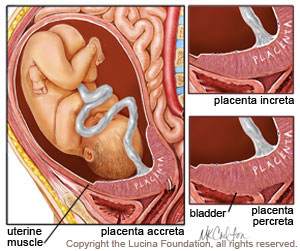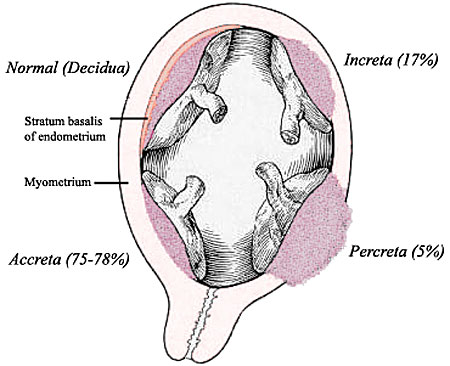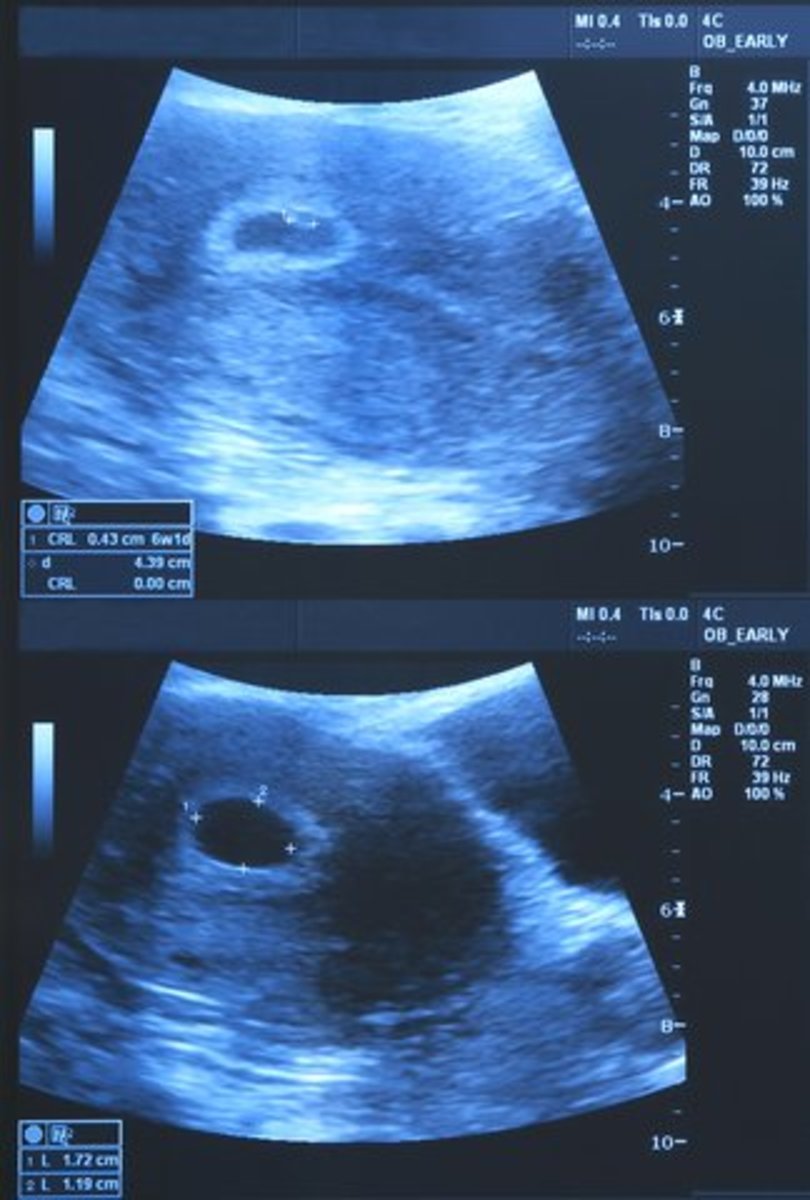Severe Pregnancy Complications: Placenta Accreta And Placenta Increta
Placenta is an organ, which connects the fetus to the uterine wall. It provides food and oxygen to the fetus and removes wastes via kidneys of mother. Placenta produces hormones necessary for pregnancy and childbirth and is ultimately a vital organ for fetus. In one of my previous hubs, I discussed about placenta previa as a possible reason for miscarriage during pregnancy and today, I will shed some light on placenta accreta, placenta increta, and placenta percreta as possible complications during pregnancy.
In one in 2500 pregnancies, the placenta is implanted in the uterine wall deeper than it should be and according to the depth, the complications are termed as placenta previa, placenta accreta, placenta incerta, and placenta percreta. Interestingly, placenta accreta adheres to the myometrium, which is the muscle layer of the uterus below the endometrium. It is the most common pregnancy complication constituting 75 percent of cases whereas placenta increta penetrates the myometrium, i.e., the uterine muscle and this accounts for 15 percent of cases. The placenta percreta goes through the myometrium and can set deep in other organs like the bladder. Due to its unique characteristics, it has been found as the least common form of pregnancy complication, assuming 5 percent of cases.
It is unknown why the placenta gets implanted deeply, but some reasons attributed to this common pregnancy complication are previous uterine surgery or cesarean section. It has been found that caesarean section increases the risk of future placenta accreta and more a women undergoes cesarean sections, the more are her risks of getting placenta accreta because in 60 percent of cases of placenta accreta around the world, women having this condition have had undergone multiple cesarean sections in the past.
Placenta accreta usually produces bleeding in the third quarter and is diagnosed by ultrasound. The doctor will assess the situation and prescribe medication and bed rest. The gynecologist will also tell the pregnant women about her delivery schedule, depending on the severity of her condition.
In some cases, to separate the placenta from the uterus after childbirth, surgery is required. It sometimes becomes necessary to perform a hysterectomy or removal of the uterus. If placenta accreta is detected early, it will be something that you have to talk to the gynecologist for options if you want more children or not. In cases of placenta percreta, other organs may be affected. The main risk to the mother is uncontrolled bleeding during surgery. Unfortunately, there is no way to prevent placenta accreta.


MRI Is Effective In Detecting Placenta Accreta
The placenta is rarely adhered too deeply into the uterus. This is known as placenta accreta in general although they differ in other grades according to the depth, placenta accreta and percreta increta. The risk of placenta accreta appears at birth, which can set deep into some portions of the uterus and can cause damage to blood vessels. It is a very serious complication of pregnancy.
Placenta accreta is diagnosed by ultrasound, but in some cases it can go unrecognized. A past study done by the University of California at San Diego has revealed that diagnostic MRI is effective in 90.1 percent of these cases.
According to Dr. Reena Malhotra, a radiologist at UCSD, “due to increasing caesarean sections and other surgeries involving the uterine wall along with women who have children at an old age, the incidence of placenta accreta has increased dramatically in the last 20 years”.
The authors of this study also believe that the results of their study are significant enough to consider that MRI is a better alternative than ultrasound to detect placenta accreta. MRI can be performed on pregnant women who have significant risk factors for developing this condition. Since there is no way to prevent placenta accreta, the best way to protect the mother is able to diagnose this complication in time.








